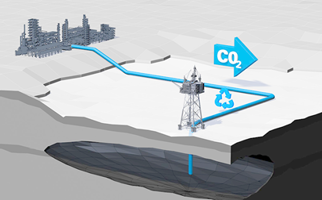
The Seismic Imaging within the UKCS Energy Transition Environment report published on 10 October 2023 (downloadable below) examines the vital and growing role that technology can play in studying the seabed and assessing potential uses of different areas of the North Sea.
The work is of particular importance now as 21 carbon storage licences have recently been awarded and the NSTA estimates that up to 100 carbon storage licences in total will be needed in the near future to meet sequestration targets, and the continuing development of offshore wind.
The carbon storage sites, in particular, will require redevelopment of large areas of the UK’s subsea geological basins and the new report chiefly looks at the various seismic and geophysical tools available to help ensure that developments are carefully planned and conducted with full consideration of interactions with other marine sectors.
The report looks in detail at the various technological solutions available for exploring sites, understanding their characteristics, and undertaking necessary ongoing monitoring.
Technology options for characterising the subsurface for carbon storage and offshore wind include deploying a suite of established techniques originally developed for the oil and gas industry that are now being refined for new purposes.
Whilst some of these techniques, such as the use of streamer seismic, may currently be most cost-effective, they have downsides due to their larger footprint and difficult access into developed areas. The focus will increasingly be on selections of techniques bespoke to each project which can minimise operational footprints (e.g. Ocean Bottom Seismic), enhance resolution where it is needed most, make the best use of early baseline data, take full advantage of improvements in processing, and exploit passive signals thus obviating the need for extensive operations.
However, the report notes that as sharing marine space becomes ever more important, technology can help overcome many challenges but, to maximise project success, early and open discussions are the best way to manage competing demands for space.
These discussions should also be supported by sharing knowledge and databases. That need is starting to be met by the UK Energy Technology Platform, and also by the growth of the Offshore Energy Digital Strategy Group and the National Data Repository.
Seismic Imaging within the UKCS Energy Transition Environment report
Seismic Imaging within the UKCS Energy Transition Environment report
-
Seismic Imaging within the UKCS Energy Transition Environment. Overview & Summary PPTX - 5mb
-
Seismic Imaging within the UKCS Energy Transition Environment. Part A: Subsurface Foundations PPTX - 47mb
-
Seismic Imaging within the UKCS Energy Transition Environment. Part B: Geophysical technologies PDF - 24mb
-
Seismic Imaging within the UKCS Energy Transition Environment. Acronyms & Glossary PPTX - 302kb



